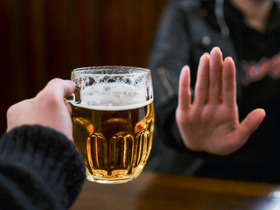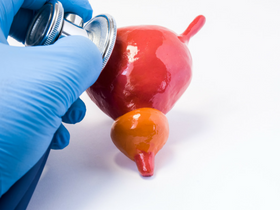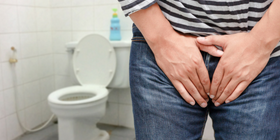An overactive bladder (or OAB) is a form of urinary incontinence that occurs when a person has a sudden and involuntary contraction in their bladder, causing an uncontrollable need to urinate.
Overactive bladder (OAB) can take a toll on your life. You might feel worried about having an “accident,” and avoid hobbies, social activities, and life responsibilities as a result.
The good news is that overactive bladder is treatable. The following list can help you to take control of symptoms of OAB.
Seek treatment.
Overactive bladder is common. But it’s not a “normal” part of the ageing process, and you certainly don’t have to deal with it on your own.
It’s important to seek treatment if you are experiencing symptoms of OAB. A healthcare professional can help you understand what you can do to target and treat symptoms of OAB.
Use absorbent products.
There are a variety of products available to prevent leakage. These include panty liners, pads, adult briefs, and reusable undergarments.
Panty liners and pads are ideal for low-volume leaks that occur every now and then. For bigger leaks, an adult brief or reusable undergarment might be a better choice.
You might need to try out a few products before you find the right one for you. Carrying a change of clothes is a good idea too.
Stay sensibly hydrated.
Most people think that drinking less is the best way to avoid an accident caused by OAB. But limiting your fluid intake isn’t the best way to tackle the problem.
When you drink too little, you risk irritating the bladder and/or urethra. You might feel constipated or suffer other health effects, such as dizziness, fatigue, or confusion.
In addition, when you drink less, your urine is more concentrated. If you have an accident, it will smell stronger.
To stay hydrated throughout the day, you should aim to drink about six cups of liquids. It’s usually alright from a health perspective to stop drinking 2 – 4 hours before you go to bed.
Avoid caffeine and alcohol.

Caffeine and alcohol are diuretics. That means that they increase urine production. They can also irritate your bladder. If you’ve been diagnosed with overactive bladder, drinking caffeine or alcohol might be making the problem worse.
Cutting back on drinks such as coffee, tea, caffeinated pop and soda, and alcoholic beverages might help you to control your overactive bladder.
Other sources of caffeine to limit include chocolate and certain medications.
Make slight changes to your diet.
Caffeine and alcohol aren’t the only substances that affect your bladder. Other foods may cause bladder irritation in certain people. Some potential bladder irritants include:
- Citrus fruits and juices
- Tomatoes
- Corn syrup and foods that contain corn syrup
- Spicy foods
- Dairy products
Limiting these foods might help to reduce overactive bladder.
Steer clear of artificial sweeteners.
Other foods and food additives can irritate the bladder. Some potential bladder irritants include artificial sweeteners such as acesulfame K, aspartame, and sodium saccharine.
These sweeteners can sometimes act like diuretics, causing you to urinate more frequently. It’s a good idea to avoid foods and drinks that contain artificial sweeteners.
Stevia is a plant-based sugar substitute that can be used as an alternative—it doesn’t cause bladder irritation.
Try Kegel exercises.
Strong pelvic floor muscles can help prevent urinary incontinence. Kegel exercises can help you to strengthen the pelvic floor muscles so they can better support the bladder.
To locate your pelvic floor muscles, try tightening the muscles you would use if you were trying to stop urinating in midstream. Hold your pelvic floor muscles clenched for a few seconds and then relax. Gradually work up to holding the muscle contractions for 10 seconds at a time.
Doing Kegels in 3 sets of 10 repetitions per day can help you to control an overactive bladder.
Train your bladder.
Bladder training is another technique that may help you regain control over when you urinate. In order to train your bladder, you first need to keep a record of when you void.
You should also record any accidents. Look for any patterns.
Next, start to gradually increase the amount of time between bathroom breaks. Over time, this may help you to strengthen your bladder so that you don’t have to go to the toilet the moment your bladder starts to fill.
Ask your doctor about medications and surgery.

When behavioural and lifestyle changes don’t alleviate symptoms of overactive bladder, other treatments are available. Medication can help to target the muscles that support the bladder and control the release of urine.
These medications may be able to decrease your chances of having an accident.
Surgery is another option. While it may be able to provide a long-term solution to an overactive bladder, it’s invasive and comes with a risk of complications.
It’s important to weigh the risks and benefits when considering surgery.
Listen to your doctor’s advice.
Your doctor can help you to develop a detailed treatment plan based on your circumstances. Treatment for an overactive bladder can involve more than one strategy or technique.
For instance, your doctor might suggest combining lifestyle changes or behavioural techniques with medication.
You should do your best to make the changes your doctor suggests. It may take some time before you experience the effects of those changes. Patience and perseverance are important.
An overactive bladder can lead to nocturia, if you think you or a loved one suffer from the condition nocturia, you’re not alone. Find out all about nocturia here, including treatments and preventative tips.
The information in this health guide should not be taken as professional medical advice. If you are having issues or have health-related concerns, you should see your personal physician.
This page is also available in:
![]() English
English


